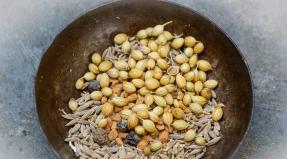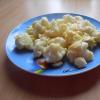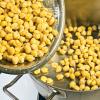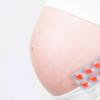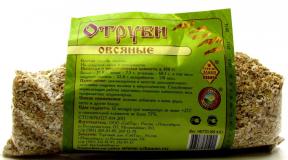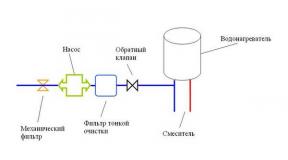Berotek - instructions for use. Berotek - instructions for use, reviews, analogs and form of release (solution for inhalations, inhalation aerosol H) drug for the treatment and prevention of bronchial asthma attacks in adults, children and during pregnancy
Composition and form of release
in bottles of dark glass of 20 ml (1 ml \u003d 20 drops); In a pack of cardboard 1 bottle-dropper.
in ballons of aerosol with mouthpiece of 10 ml (200 doses); In the box 1 cylinder.
Description of the dosage form
Inhalation Solution: Transparent colorless or almost colorless particulate liquid. The smell is almost imperceptible.
pharmachologic effect
pharmachologic effect - Bronchylasting.Poisitively stimulates beta 2 -adrenoreceptors. Relaxes the smooth muscles of bronchi and vessels and counteracts the development of bronchospastic reactions caused by the influence of histamine, methaholine, cold air and allergens (the reaction of the hypersensitivity of the immediate type). Immediately after the appointment, Fenoterol blocks the release of inflammatory mediators and briefcases. In addition, when using phenooterol in higher doses, the mukiciliary clearance has been gained.
The beta-adrenergic effect of the drug for heart activities (an increase in force and heart rate) is due to the vascular effect of phenoterol, the stimulation of beta 2 -adrenoretolers of the heart, and when using doses exceeding therapeutic, - beta stimulation of beta 1 -adrenoreceptors. Tremor is the most frequent undesirable effect when using beta-agonists.
The drug reduces the contractile activity and the Miometrium Tone.
Pharmacodynamics
Fenoterol warns and quickly stops bronchospasm of various origins. The beginning of the action after inhalation - after 5 minutes, the maximum is 30-90 minutes, the duration is 3-6 hours.
Pharmacokinetics
Depending on the method of inhalation and the inhalation system used, about 10-30% of the active substance exempted from an aerosol preparation after inhalation reaches the lower respiratory tract, And the rest of the deposit in the upper respiratory tract and swallows. As a result, a certain amount of inhaled phenoterol enters the gastrointestinal tract. After inhalation of 1 dose of the drug, the degree of suction is 17% of the administered dose. Suction wears a two-phase character - 30% of phenotherol hydrobromide is quickly absorbed with T 1/2 11 min, and 70% is absorbed slowly from T 1/2 120 min.
After administration, about 60% of phenooterol hydrobromide is absorbed. The achievement time of C MAX blood plasma is 2 h. Binding of plasma proteins is 40-55%. Metabolized in the liver. Excreted by kidneys and with bile in the form of inactive sulphate conjugates.
In parenteral administration of phenoterol, the hydrobromide is derived respectively the three-phase model with T 1/2 - 0.42 min, 14.3 min and 3.2 hours. Biotransformation of the phenotherol hydrobromide in humans flows exclusively by conjugation with sulfates mainly in the intestinal wall.
Fenoterol hydrobromide can penetrate unchanged through a placental barrier and fall into breast milk.
Indications of the drug Berotek ® N
Warning and burning bronchospasm when bronchial asthma, chronic obstructive bronchitis, lung emphysema. Prevention of asthma of physical effort. Symptomatic treatment of bronchial asthma and chronic obstructive pulmonary disease.
Contraindications
Hypersensitivity, hypertrophic obstructive cardiomyopathy, tachyarhythmias,
pulk heart, aortic stenosis, decompensated diabetes, thyrotoxicosis, glaucoma, threatening abortion, pregnancy (I trimester).
Application in pregnancy and breastfeeding
Contraindicated in the first trimester of pregnancy, the appointment of the drug is possible in the II-III trimester of pregnancy and in the period breastfeeding Only in case the expected effect of therapy exceeds the potential risk to the fetus or child.
Side effects
From the CNS: Small tremor, nervousness; seldom - headache, dizziness, accommodation violation; In isolated cases - changing the psyche.
From the side of the cardiovascular system: Tachycardia, heartbeat (especially in patients with aggressive factors); Rarely (when used in high doses) - reduction of DDA, raising the garden, arrhythmia.
From side respiratory system: In rare cases - cough, local irritation; Very rarely - paradoxical bronchospasm.
From the head of the gastrointestinal authorities: nausea, vomiting.
Allergic reactions: Rarely - rash, angioedema edema, lip and face, urticaria.
Others: Hypokalemia, strengthening of sweating, weakness, myalgia, cramps, urine delay.
Interaction
Beta adrenergic and anticholinergic agents, xanthine derivatives (theophylline) can enhance the bronchoranting effect. The simultaneous purpose of other beta adrenomimetics, which fall into systemic blood flow of anticholinergic agents or xanthine derivatives (for example, theophylline) can lead to an increase in side effects.
Perhaps a significant weakening of the bronchusshirt with the simultaneous purpose of beta-adrenoblockers.
Simultaneous use with Mao inhibitors and tricyclic antidepressants enhances the action of Berrek N.
Inhalation of halogenated hydrocarbon anesthetics (halotane, trichloroethylene, enfluraura) can enhance the effect of Berretka H on the cardiovascular system.
Against the background of the use of Berotek, the development of hypokalemia is possible, which can increase while the xanthine derivatives, steroids and diuretics are prescribed. This fact should be paid to special attention in the treatment of patients with severe forms of obstructive respiratory diseases.
Hypokalemia can lead to an increase in the risk of arrhythmia in patients receiving digoxin. In addition, hypoxia can enhance the negative effect of hypokalemia on heartbeat. In such cases, it is recommended to monitor the level of potassium in serum.
Method of application and dose
Inhalation
Solution for inhalations. Adults and children over 12 years old, - 0.5 ml (0.5 mg - 10 drops), in severe cases - 1-1.25 ml (1-1.25 mg - 20-25 drops), in extremely severe cases (under the supervision of the doctor) - 2 ml (2 mg - 40 drops).
Prevention of asthma of physical effort and symptomatic treatment of bronchial asthma and chronic obstructive pulmonary disease - 0.5 ml (0.5 mg - 10 drops) up to 4 times a day.
Children 6-12 years old (body weight 22-36 kg) to relieve an attack of bronchial asthma - 0.25-0.5 ml (0.25-0.5 mg - 5-10 drops), in severe cases - 1 ml (1 mg - 20 drops), in exceptionally severe cases (under the supervision of the doctor) - 1 , 5 ml (1.5 mg - 30 drops).
Asthma prevention of physical effort and symptomatic treatment of bronchial asthma and other states with a reversible narrowing of the respiratory tract - 0.5 ml (0.5 mg - 10 drops) up to 4 times a day. Children under 6 years (body weight is less than 22 kg) (only under the supervision of the doctor) - about 50 μg / kg to receive (0.25-1 mg - 5-20 drops) up to 3 times a day.
The recommended dose immediately before use is bred by saline to a volume of 3-4 ml. The dose depends on the method of inhalation and spray quality. If necessary, repeated inhalations are carried out with an interval of at least 4 hours.
Spray can. Acute attack of bronchial asthma - 1 dose, if necessary, in 5 minutes, inhalation can be repeated. The next purpose of the drug is possible no earlier than after 3 hours. If the effect is missing and additional inhalation is required, it should be sent without delay medical help in the nearest hospital.
Prevention of asthma of physical effort and symptomatic treatment of bronchial asthma and other states accompanied by a rotary narrowing of the respiratory tract - 1-2 doses per reception, but not more than 8 doses per day.
To obtain the maximum effect, it is necessary to properly use the dosage aerosol.
Before using the dosage aerosol, shake the balloon for the first time and double-click on the bottom of the cylinder.
Each time using a dosage aerosol, the following rules must be followed:
1. Remove the protective cap.
2. Make a slow, deep exhalation.
3. Holding the balloon, grab the lips of the tip. The balloon should be directed upside down.
4. Making a deep breath, at the same time quickly press the bottom of the balloon before the release of one inhalation dose. For a few seconds, delay your breath, then remove the tip of the mouth and slowly exhale. Repeat actions to obtain a second inhalation dose.
5. Wear a protective cap.
6. If an aerosol cylinder has not been used for more than 3 days, you should first press the bottom of the balloon until the aerosol cloud appears.
The balloon is designed for 200 inhalations. After that, the cylinder should be replaced. Despite the fact that some contents may remain in the cylinder, the number medicinal substance, released during inhalation, can be reduced.
The cylinder is opaque, so the amount of drug in the cylinder can only be determined by the following method: removing the protective cap, the cylinder is immersed in a container filled with water. The amount of the drug is determined depending on the position of the cylinder in water.
The tip should be kept clean, if necessary, it can be washed in warm water. After using soap or detergent, rinse thoroughly with clean water.
A warning: The plastic adapter for the mouth is designed specifically for the dosage aerosol Berothek N and serves to accurately dosing the drug. The adapter should not be used with other dosage aerosols. It is also impossible to use a dosage tetrafluoroeta-containing aerosol Berothek N with any other adapters, except the adapter supplied with the balloon.
The contents of the cylinder is under pressure. The balloon cannot be opened and exposed to heating above 50 ° C.
Overdose
Symptoms: Tachycardia, heartbeat, arterial hyper-or hypotension, an increase in pulse pressure, angular pain, arrhythmias, blood tides to face, tremor.
Treatment: The appointment of sedatives, tranquilizers, in severe cases - intensive therapy. Cardooselective beta adrenoblasts are recommended as antidotes. However, it should be remembered about the possible strengthening of bronchial obstruction under the influence of beta-adrenobloclars and carefully select a dose for patients suffering from bronchial asthma or chronic obstructive lung diseases.
Precautions
Caution is prescribed with diabetes mellitus, a recently suffered myocardial infarction, severe diseases of the cardiovascular system, hyperthyroidism, feochromocytoma.
When using beta 2 -agonists, serious hypokalemia is possible.
With an acute, rapidly increasing disposage (difficulty breathing), you should immediately consult with your doctor.
It should be borne in mind that the use to relocate the attack of large doses for a long time can cause an uncontrolled deterioration in the course of the disease and determine the need for the correction of basic anti-inflammatory therapy in inhalation corticosteroids.
Special caution should be taken with severe bronchial asthma, because This effect can be enhanced by the concomitant use of xanthine derivatives, glucocorticoids and diuretics. In addition, hypoxia can enhance the effect of hypokalemia on the heart rhythm. In such situations, regular control of serum potassium in serum is recommended.
special instructions
When you first apply the new form of a dosed aerosol of Berotek, patients may notice that to taste new drug somewhat different from the same dosage formcontaining freon. When moving from one form to another patients, it should be warned about a possible change in taste sensations. It should also be reported that these drugs are interchangeable and that taste properties are not related to the safety and effectiveness of the new drug.
Other sympathomimetic bronchoditators should be appointed simultaneously with Berotecom N only under medical supervision.
Manufacturer
Beringer Ingelheim Pharma kg, Beringer Ingelheim Unit GmbH, Germany (aerosol for inhalation dosage).
Beringer Inghelheim Italy S.P.A., Italy (inhalation solution).
Conditions for the storage of the drug Berotek ® N
At a temperature not higher than 25 ° C.Keep out of the reach of children.
The shelf life of the Preparation of Berotek ® N
solution for inhalations 1 mg / ml - 5 years.
aerosol for inhalations dosed 100 μg / dose - 3 years.
Do not apply after the expiration date indicated on the package.
Synonyms of nosological groups
| Rubric ICB-10 | Synonyms for diseases of the ICD-10 |
|---|---|
| J44 other chronic obstructive pulmonary disease | Allergic bronchitis |
| Asthmatic bronchitis | |
| Astmoid bronchitis | |
| Bronchitis allergic | |
| Bronchitis asthmatic | |
| Bronchitis obstructive | |
| Bronchi disease | |
| Difficult wet wet with sharp and chronic diseases respiratory tract | |
| Cough with inflammatory lung and bronchial diseases | |
| Reversible bronchial obstruction | |
| Reversible obstructive respiratory disease | |
| Obstructive disease Bronchi | |
| Obstructive lung disease | |
| Obstructive bronchitis | |
| Restrictive pathology of the lungs | |
| Spastic bronchitis | |
| Chronic lung diseases | |
| Chronic nonspecific lung diseases | |
| Chronic obstructive lung diseases | |
| Chronic obstructive bronchitis | |
| Chronic obstructive respiratory disease | |
| Chronic obstructive lung disease | |
| J45 Asthma | Asthma physical effort |
| Astmatic states | |
| Bronchial asthma | |
| Bronchial asthma easy course | |
| Bronchial asthma with difficulty wetting wet | |
| Bronchial asthma of severe flow | |
| Bronchial asthma of physical effort | |
| Hyperscecretory asthma | |
| Hormone-dependent bronchial asthma | |
| Cough with bronchial asthma | |
| Saving attacks choking with bronchial asthma | |
| Neallergic bronchial asthma | |
| Night asthma | |
| Night attacks asthma | |
| The aggravation of bronchial asthma | |
| Bronchial asthma attack | |
| Endogenous forms of asthma | |
| J46 Astmatic status | Astmatic attack |
| Astmatic status | |
| J98.8.0 * Bronchostasm | Bronchospasm with bronchial asthma |
| Bronchospasm when exposed to allergen | |
| Bronchospastic reactions | |
| Bronchospastic states | |
| Bronchospasty syndrome | |
| Diseases accompanied by bronchospastic syndrome | |
| Reversible bronchospasm | |
| Spasmatic cough |
This article allows you to familiarize yourself with the instructions for use. medicinal preparation Berotek. There are reviews of site visitors - consumers of this medicine, as well as the opinions of the doctors of specialists in the use of Berotek in their practice. A big request to more actively add your reviews about the preparation: helped or did not help the medicine to get rid of the disease, which complications were observed and side effectsmay not be stated by the manufacturer in annotations. Analogs of Berrek in the presence of available structural analogues. Use for the treatment and prevention of attacks of bronchial asthma, broncho-prestructive syndrome in adults, children, as well as during pregnancy and breastfeeding. Composition of the drug.
Berotek - Broncholic drug, selective beta2 adrenomimetics. It is an effective broncholy preparation for preventing and relieving the bouts of bronchospasm with bronchial asthma and other states accompanied by a reversible obstruction of the respiratory tract, such as chronic obstructive bronchitis with the presence or without lung emphysema.
Fenoterol is a selective stimulant of beta2-adrenoreceptors. When using the drug in higher doses, beta1-adrenoreceptor is stimulated (for example, when prescribed for tocolic therapy).
Binding of beta2-adrenoreceptors activates adenylate cyclase through a stimulant GS protein, followed by an increase in the formation of cyclic adenosine monophosphate (CAMF), which activates proteinkinase A. proteinkinase, and deprives the myosin ability to connect with actin, which prevents the reduction in the smooth muscles and contributes to the development of bronchopolytic action and the elimination of bronchospasm.
In addition, the phenoterol inhibits the release of the fat cells of the mediators of inflammation, thereby providing a protective effect from the influence of bronchokonstrictors as histamine, methawin, cold air and allergens.
The reception of phenoterol in doses of 600 μg increases the activity of the fiscal epithelium of the bronchi and accelerates the mucociliary transport.
Due to the stimulating effect on beta-adrenoreceptors, the phenoterol can have an effect on myocardium (especially in doses exceeding therapeutic), causing the participation and enhancement of heart abbreviations.
Fenoterol warns and quickly stops bronchospasm of various origins. The beginning of the action after inhalation - after 5 minutes, a maximum - after 30-90 minutes, the duration is 3-5 hours.
Structure
Fenoterol hydrobromid + excipients.
Pharmacokinetics
Depending on the method of inhalation and the inhalation used inhalation system, about 10-30% of the Berretk reaches the lower respiratory tract, and the rest of the part is deposited in the upper respiratory tract and swallows. This part of the active substance is subjected to biotransformation due to the effect of the "first passage" through the liver. The swallowed amount of the drug does not affect the concentration of the active substance in the blood plasma achieved after inhalation. Fenoterol hydrobromide in unchanged form penetrates through a placental barrier and stands out with breast milk. Metabolized in the liver. Fenoterol in humans is subjected to intense metabolism by conjugation to glucuronides and sulfates. By swallowing, the phenoterol is metabolized, mainly by sulfatization. This metabolic inactivation of the starting material begins in the intestinal wall. Biotransformation, including bile secretion, undergoes the main part of the dose (approximately 85%). The removal of phenoterol with urine (0.27 l / min) corresponds to approximately 15% of the average general clearance of the systemically available dose. The volume of renal clearance testifies to the tubular secretion of phenoterol in addition to glomerular filtering. After inhalation in an unchanged form of 2%, the dose is excreted through the kidneys for 24 hours. Excreted with urine and bile in the form of inactive sulphate conjugates.
Indications
- attacks of bronchial asthma or other states with reversible obstruction of the respiratory tract (incl. chronical bronchitis, chronic obstructive pulmonary disease (COPD));
- prevention of bronchial asthma attacks due to physical stress;
- as an armor-seating agent before inhalation of other drugs (antibiotics, mucolithics, glucocorticosteroids (GKS));
- conducting bronighting tests in the study of the function of external respiration.
Forms of release
Solution for inhalations.
Aerosol for inhalation dosage (Berothek N).
Instructions for use and dosage
Solution
The drug is prescribed inhalation (possibly with the help of the inhaler). It should be borne in mind that 20 drops \u003d 1 ml, 1 drop contains 50 μg of phenoterol hydrobromide. Doses should be selected according to the individual needs of the patient; In addition, during the treatment of the patient should be under the supervision of the doctor.
Adults (including patients older than 75 years old) and adolescents older than 12 years
An inhalation is prescribed 0.5 ml (10 drops \u003d 500 μg of phenoterol hydrobromide), which in most cases is enough to immediately relieve the attack; If necessary, reappointing the drug is inhaled by 0.5 ml (10 drops \u003d 500 μg of fluheterol hydrobromide) up to 4 times a day, but it is possible to reduce the individual dose, depending on the effectiveness of the nebulizer. In severe cases, if the dose is 1 ml (20 drops) turns out to be ineffective, higher doses of 1 to 1.25 ml may be required (20-25 drops \u003d 1-1.25 mg of fluheterol hydrobromide); In extremely severe cases, if the dose is up to 2 ml (40 drops) turns out to be ineffective, inhaled under the supervision of a 2 ml doctor (40 drops \u003d 2 mg of phenoterol hydrobromide).
Children from 6 to 12 years old (with a body weight about 22-36 kg)
Attacks of bronchial asthma and other states with reversible obstruction of the respiratory tract
An inhalation is prescribed 0.25-0.5 ml (5-10 drops \u003d 250-500 μg of phenotherol hydrobromide), which in most cases enough for immediate relief symptom; If necessary, reappointing the drug is inhaled by 0.5 ml (10 drops \u003d 500 μg of fluheterol hydrobromide) up to 4 times a day, but it is possible to reduce the individual dose, depending on the effectiveness of the nebulizer. In severe cases, if the dose is up to 1 ml (20 drops) turns out to be ineffective, higher doses of 1 ml may be required (20 drops \u003d 1 mg of phenooterol hydrobromide). In extremely severe cases, if the dose is up to 1.5 ml (30 drops) turns out to be ineffective, inhaled under the supervision of a 1.5 ml physician (30 drops \u003d 1.5 mg of phenoterol hydrobromide).
Prevention of bronchial asthma seizures due to physical stress
An inhalation is prescribed 0.5 ml (10 drops \u003d 500 μg of phenotherol hydrobromide) to physical exertion.
Children under 6 years old (with a mass of body less than 22 kg)
Due to the limited information about this age group, treatment is carried out only under the supervision of a doctor, assigning a drug in the next dose: inhaled about 50 μg / kg to a reception (0.05 ml or 1 drop) / kg of body weight, but not more than 0.5 ml (10 Drops) for one dose up to 3 times a day.
Treatment begins, as a rule, with the smallest recommended dose.
The solution for inhalations cannot be dissociated with distilled water.
Mortification of the solution should be carried out every time before applying; The remnants of the diluted solution are poured.
The inhalation solution can be ingated simultaneously with compatible cholino and musolithic means (for example, bromide and ambroxol in the form of solutions for inhalation).
Spray can
Adults and adolescents older than 12 years
Attacks of bronchial asthma and other states accompanied by reversible obstruction of the respiratory tract
If the effect is missing after 2 inhalations, and additional inhalation is required, you should contact a doctor without delay.
Children from 6 to 12 years
Attacks of bronchial asthma and other states accompanied by reversible obstruction of the respiratory tract
In most cases, 1 inhalation dose is enough to relieve bronchospasm; If the respiratory facilitation has not come for 5 minutes, you can repeat inhalation.
If the effect is missing after 2 inhalations, additional inhalations are required, it should be appreciated without delay.
Prevention of asthma of physical effort
1-2 Inhalation doses to exercise, up to 8 inhalations per day.
Children from 4 to 6 years
Due to limited experience in children under the age of 6 years, the drug should be used only by appointing a doctor and under the supervision of adults.
Attacks of bronchial asthma and other states accompanied by reversible obstruction of the respiratory tract
To relieve bronchospasm, 1 inhalation dose is enough. If there is no effect, you should seek medical help without delay.
Prevention of asthma of physical effort
1 Inhalation dose to exercise, up to 4 inhalations per day.
Terms of use of the drug
To achieve the maximum effect, it is necessary to properly use the dosage aerosol.
Before using the dosage aerosol, the first time should be pressed on the bottom of the canister.
Each time using a dosage aerosol, the following rules must be followed:
- Remove the protective cap.
- Make a slow, deep breath.
- Holding the spray, tightly grab the lug. In this case, the arrow and bottom of the canister should be directed up.
- Making a deep breath, at the same time quickly press the bottom of the canister before the release of 1 inhalation dose. For a few seconds, delay your breath, then remove the mouthpiece from the mouth and slowly exhale. If re-inhalation is required, repeat the same actions (paragraphs 2-4).
- Wear a protective cap.
- If the aerosol can not be used for more than 3 days, you should first click on the bottom of the cannon.
The balloon is designed for 200 inhalations. Then the cylinder should be replaced. Despite the fact that there may remain some contents in the cylinder, the amount of medicinal substance released during inhalation decreases.
The cylinder is opaque, so the amount of the drug in the cylinder can be defined as follows: remove the protective cap, the cylinder is immersed in a container filled with water. The amount of the drug is determined depending on the position of the cylinder in water.
Inhaler should be rushing at least 1 time per week.
To clean, you must first remove the cap protecting against dust and remove the container from the inhaler. Rinse inhaler with warm water to remove the accumulated medicine and / or visible dust.
After cleaning, you need to shake the inhaler and give it to dry in the air without using heating devices. When the mouthpiece dries, return the container and the cap from dust.
The plastic mouthpiece for the mouth is designed specifically for the dosage aerosol Berothek N and serves to accurately dosing the drug. The mouthpiece should not be used with other dosage aerosols. It is also impossible to use the dosage aerosol of Berothek N with other adapters.
- excitation;
- nervousness;
- tremor;
- headache;
- dizziness;
- myocardial ischemia;
- arrhythmia;
- tachycardia;
- heartbeat;
- an increase or reduction of systolic blood pressure;
- cough;
- irritation of larynx and pharynx;
- paradoxical bronchospasm;
- nausea, vomiting;
- hyperhydrosis;
- skin reactions (rash, itching, urticaria);
- muscle spasm;
- malgy;
- muscle weakness;
- hypersensitivity.
Contraindications
- tahiaritmia;
- hypertrophic obstructive cardiomyopathy;
- children's age up to 4 years (for aerosol Berotek N);
- increased sensitivity to phenoterol and other components of the drug.
Because Information on the use of the drug in a solution for inhalations in children under the age of 6 years is limited, treatment is carried out with caution, only under the supervision of the doctor.
Application in pregnancy and breastfeeding
Results of preclinical studies in combination with existing experience clinical application The preparation of Berotek suggests that it does not cause any unwanted phenomena during pregnancy. However, it should be used with caution to apply the drug during pregnancy, especially in 1 trimester, if the potential benefits for the mother exceeds the potential risk to the fetus.
The possibility of the inhibitory effect of phenooterol on the contractile activity of the uterus should be taken into account.
Preclinical studies have shown that Fenoterol penetrates breast milk. The safety of the drug during lactation has not been studied. During the lactation, the use of the drug is possible if the potential benefits for the mother exceeds the potential risk for the child.
Application in children
Dosage form in the form of an aerosol of the preparation of Berothek N is contraindicated to children under the age of 4 years.
Because Information on the use of the drug in children aged 4-6 years is limited, treatment is carried out with caution, only under the supervision of a doctor (age dosages for children are indicated in the instructions for use above).
special instructions
In patients diabetes During treatment, it is necessary to carry out regular control of the glucose content in plasma.
In the first use of the dosed aerosol of Berotek, the patients may noted that the new aerosol has a slightly different taste compared to the previous aerosol containing Freon. Patients should be prevented about this during the transition from the preparation of Berothek N, containing Freon to the preparation of Berothek H, which is not containing freon. Patients need to be aware that Berothek H, containing freon and the preparation of Berothek H, which does not contain freon completely interchangeable, and the change in taste does not affect the efficacy and safety of the drug.
Other sympathomimetic bronchodylators can be used together with the preparation of Berotek only under the supervision of the doctor.
With acute, rapidly increasing shortness of breath, the patient should immediately consult a doctor.
The relief of the bouts of bronchial asthma may be preferable to regular use of the drug (symptomatic treatment). Patients should be examined to identify the need for additional or more intensive anti-inflammatory treatment (for example, GCS inhalations) in order to control the inflammation of the respiratory tract and prevent long-term exacerbations of bronchial asthma.
In the case of amplification of bronchial obstruction, it is considered unacceptable and may even be risky increasing the multiplicity of intake of beta2-adrenoregrator agonists in doses exceeding the recommended, or an increase in the recommended duration of use. In such a situation, the treatment plan should be revised and, especially, the adequacy of anti-inflammatory therapy.
In the treatment of beta2-adrenoreceptor agonists, it is possible to develop pronounced hypokalemia. Special caution should be taken with severe bronchial asthma, because This effect can be enhanced by the concomitant use of xanthine derivatives, GKS and diuretics. In hypoxia, it is possible to strengthen the effect of hypokalemia on the heart rhythm. In such situations, regular control of serum potassium concentration is recommended. In rare cases, myocardium ischemia was observed associated with beta2-adrenoreceptor agonists.
Hypokalemia in patients receiving digoxin increases myocardial sensitivity to cardiac glycosides and can cause arrhythmia.
The drug contains a preservative of the benzalconium chloride and a stabilizer of Dinatari Edetat. It was shown that these components in some patients can cause bronchospasm.
Impact on the ability to driving vehicles and control mechanisms
The effect of the use of the drug on the patient's ability to perform work requiring increased attention and speed of psychomotor reactions is not established.
Medicinal interaction
With the simultaneous use of beta adrenomimetics, anticholinergic drugs, xanthine derivatives (for example, theophylline), cromoglycythic acid, GKS, diuretics, it is possible to strengthen the action and side effects of phenotherol.
Perhaps a significant weakening of the bronchyolic effect of phenoterol while using beta adrenobloclars.
It follows with caution to assign berets to patients receiving inhibitors of Mao and tricyclic antidepressants, because These drugs are able to enhance the effect of phenoterol.
Tools for inhalation anesthesia (halotane, trichloroethylene, enfluran) enhance the effect of phenoterol on the cardiovascular system. Gatalon contributes to the development of arrhythmia.
Simultaneous purpose with other bronchodilies with a similar mechanism of action leads to an additive effect and development of overdose.
Analogs of the Medicinal Bread
Structural analogues of PO active substance:
- Berotek N;
- PARTASISTEN;
- Fenoterol;
- Fenoterol Hydrobromide.
Analogs of PO pharmacological group (Preparations of beta adrenomimetics):
- Aloprol;
- Astalin;
- Astmopent;
- Atimo;
- Berodal;
- Berodal N;
- Biasten;
- Brikanil;
- Ventolin;
- Ventolin Nebules;
- Volmax;
- Ginipral;
- Ditete;
- Dobutamine;
- Dobtrex;
- Zenheyl;
- Intal Plus;
- Inforptisprise respiratory;
- Ipradol;
- IPRAMOL STRY SAY;
- Kashnol;
- Clenbuterol;
- Combivent;
- Combipek;
- Oxis turbuchaler;
- Onback Brizhaler;
- PARTASISTEN;
- Salamole;
- Salmeterol xinafoate;
- Salmo;
- Salben;
- Salbouvent;
- Salbutabs;
- Salbutamol;
- Salgim;
- Salmecort;
- Salmeter;
- Saltos;
- Serent;
- SERELET;
- Seallide Multidisc;
- Symbicort Turbukhaler;
- Tevacomb;
- Fenoterol;
- Foraudil;
- Formoterol;
- Cyclocaps cybutol.
In the absence of analogues of drugs on the active substance, you can follow the links below on the disease, which helps the appropriate drug, and see the analogues on therapeutic effects.
Structure
In 1 ml of the solution contains 1 mg of phenooterol hydrobromide.
Excipients: Benzalconium chloride, Dinatari Edetat, sodium chloride, hydrochloric acid, purified water.
Description
Transparent colorless or almost colorless particulate liquid. The smell is almost imperceptible.
Pharmacotherapeutic group
Means for the treatment of obstructive diseases of the respiratory tract. Selective beta-2-adrenoreceptor agonists.
The code ATX: R03ac04.
Pharmacological properties
Pharmacodynamics
Berotek is an effective bronchial asthma for the treatment of bronchial asthma and with other states accompanied by a reversible obstruction of the respiratory tract, such as chronic obstructive bronchitis with emphysema lungs or without it. After oral administration, Berotek begins to act in a few minutes, the action lasts up to 8 hours.
With obstructive diseases of the lungs, the expansion of the bronchi caused by phenoterol occurs within a few minutes. The bright effect lasts 3-5 hours.
Fenoterol Hydrobromide is beta adrenomimetics direct action With a predominant effect in therapeutic doses on beta2 receptors. The stimulation of beta1 receptors occurs only when the drug is used in high doses (for example, when administered to the tokolysis).
Bonding with beta2-adrenoreceptors activates adenylate cyclase through an incentive GS protein, followed by an increase in the formation of the CAMF, which, in turn, activates proteinkinase A. The latter phosphorylates target proteins in smooth muscle cells, which causes them relaxation. This leads to phosphorylation of kinase of the mild chain of myosin, inhibition of phosphoinosine hydrolysis and the discovery of calcium-activated fast potassium channels. There is a scientific confirmation that potassium channels can be directly activated by stimulating GS protein.
Fenoterol causes a decrease in the tone of the smooth muscles of the bronchi and blood vessels And it protects it from the effects of substances that stimulate bronchokonstriction, such as histamine, methawin, cold air and allergens (the reaction of immediate-type). After acute administration, the release of bronchokonstrictors and pro-inflammatory mediators from the fat cells was stopped. In the future, the enhancement of mukiciliary clearance after the administration of phenoterol in a dose of 0.6 mg is demonstrated.
More high concentrations In the plasma of blood, which are more often achieved during oral administration or, even more often, with intravenous administration, cause inhibition of the tone of the uterus. Also in higher doses, metabolic effects are developing: lipolysis, glycogenolysis, hyperglycemia and hypokalemia, the latter is caused by an increase in the reverse capture of K + into a skeletal muscles. Beta adrenergic effects on the heart, such as increasing heart rate and contractility, caused by vascular effects of phenoterol, stimulation of cardiac beta2 receptors, and in superhetephoric doses - stimulation of beta1 receptors.
As with the use of other beta adrenergic tools, the QTC interval elongation has been reported.
Often the observed effect of beta-adrenoreceptor agonists is tremor.
Unlike the action of the smooth muscles of the bronchi, the systemic effects of beta-adrenoreceptor agonists are associated with the development of tolerance.
IN clinical studies Fenoterol demonstrated high efficiency In the treatment of manifest bronchospasm. It warns bronchospasm on incentives of various genesis, such as exercise stress, Cold air, immediate-type reaction to the effects of allergen.
Pharmacokinetics
The pharmacokinetic properties of Fenoterol were examined after intravenous, inhalation and oral administration. Therapeutic effect drug Berotek achieved through the local impact on the respiratory tract. Therefore, there is no correlation between the concentration of phenooterol in the blood and the bright effect.
Absorption
After inhalation, depending on the method of inhalation and the inhalation system used, about 10-30% of the active substance released during inhalation, reaches the lower respiratory tract, and the rest deposits in the upper respiratory tracts and the oral cavity.
After the inhalation administration of the dosage aerosol, the absolute bioavailability of phenotherol is 18.7%.
In fact, the absorption of lungs wears a two-phase character - 30% of the fluiderol hydrobromide is quickly absorbed with the half-life of 11 minutes; 70% is absorbed slowly, and the half-life is 120 minutes. After oral administration, about 60% of phenooterol is absorbed. The absorbed part is subjected to biotransformation due to the "primary passage effect" through the liver, as a result of which the bioavailability of the drug after oral administration is about 1.5%.
Thus, the proportion of the progressing portion of the drug is less than the concentration of the drug in the blood plasma after inhalation.
Distribution
Fenoterol is distributed throughout the body. Inpatient status distribution (VSS) after intravenous administration It is 1.9-2.7 l / kg.
The distribution of phenoterol in the plasma after intravenous administration occurs according to a three-phase model with half-life periods t. α \u003d 0.42 minutes, t. β \u003d 14.3 minutes and t. γ \u003d 3.2 hours. The connection with plasma proteins is 40-55%.
Metabolism
Fenoterol in humans is subjected to intense metabolism by conjugation to glucuronides and sulfates. After oral administration, the phenoterol is metabolized mainly by sulfatization. Metabolic inactivation of the starting material begins in the intestinal wall.
Elimination
Biotransformation of phenotherol, including biliary isolation, is the main part (approximately 85%) of the average general clearance, equal to 1.1-1.8 l / min. After intravenous administration. The removal of phenoterol with urine (0.27 l / min) corresponds to approximately 15% of the average general clearance of the systemically available dose. Taking into account the part of the drug associated with plasma proteins, the volume of renal clearance indicates the presence of tubular secretion of phenotherol in addition to glomerular filtering. Within 48 hours after oral and intravenous administration, the total radioactivity isolated with urine is approximately 39% and 65% of the dose, respectively, and radioactivity isolated with the feces is 40.2% and 14.8% dose, respectively. After oral administration, 0.38% dose is derived from the urine as a source substance, while after intravenous administration, 15% is removed unchanged. After inhalation administration using a dosage aerosol in unchanged form through the kidneys, 2% of the dose is displayed within 24 hours.
Fenoterol can penetrate the placenta in a non-metabolized state and stand out with breast milk.
Data on the effect of phenoterol in patients with diabetes is not enough.
Indications for use
Berotek is a broncho-tutorial and shown for:
Symptomatic treatment of acute bouts of bronchial asthma. Prevention of attacks at bronchial asthma of physical effort. Symptomatic treatment of bronchial asthma and / or other diseases accompanied by a reversible respiratory tract, for example, chronic obstructive bronchitis. During these states, the need for concomitant anti-inflammatory therapy should be considered.The drug is also shown at:
"Preparation" (armoredation) and as an aid with inhalation therapy with antibiotics, secretologists, corticosteroids, thermal water. Artificial ventilation In patients with a bronchokonstructive component. Brouthern tests in the study of the lung function.Method of application and dose
Adults (including older) and adolescents older than 14 years
To relieve symptoms, 0.5 ml is usually sufficient (10 drops).
In severe cases, higher doses may be required up to 1.25 ml (25 drops).
In particularly severe cases, up to 2 ml (40 drops) can be assigned under the supervision of the doctor.
Bronchial asthma
Children OT 6 up to 14 years old
Sharp attacks of bronchial asthma
To relieve symptoms, 0.25-0.5 ml is usually enough (5-10 drops).
In severe cases, higher doses may be required up to 1 ml (20 drops).
In particularly severe cases, up to 1.5 ml (30 drops) can be assigned under the supervision of the doctor.
Prevention of attacks at bronchial asthma of physical effort
It is used for 0.5 ml (10 drops) up to 4 times a day.
Bronchial asthma
0.5 ml (10 drops) up to 4 times a day if necessary.
Children under 6 years
Treatment should usually begin with the lowest recommended dose.
The recommended dose should be diluted with a physiological saline to a finite volume of 3-4 ml and is injected in inhalation using a nebulizer until the solution is completed; Inhalation will last about 6-7 minutes. The solution can also be used without dilution. The solution should prepare each time before applying; Any residues must be destroyed.
The dosage may also depend on the method of administration of the drug and the characteristics of the nebulizer. With the use of particles of 5 μm, a dose is reduced. Duration of inhalation can also be adjusted due to dilution. The solution can be entered using wide spectrum Nebulizers. If oxygen tents are used, the recommended flow rate is 6-8 l / min.
The solution can be administered together with compatible antiholinergic agents and musolithics - Atrovant, Lazolyvan.
If necessary, inhalation can be repeated with an interval of at least 4 hours.
Side effect
Like other beta-agonists of Berotek can cause the following side effects, including heavy hypokalemia.
Like other drugs used inhalation, Beroch may cause local irritation.
Side effects are presented below according to system-organ classes and the following categories of the frequency of occurrence: Very often (≥1 / 10); Often (from ≥1 / 100 to<1/10); нечасто (от ≥1/1000 до <1/100); редко (от ≥1/10000 до <1/1000); очень редко (<1/10000); неизвестно (не может быть оценена на основании имеющихся данных).
Impaired immune system
It is not known: the reaction of hypersensitivity, allergic reactions.
Violations from metabolism and nutrition
Infrequently: hypokalemia.
Disorders of the psyche
Infrequently: excitement.
Unknown: nervousness.
Nervous System Violations
Often: tremor.
Unknown: Headaches, dizziness.
Heartbeat
Infrequently: arrhythmia.
Unknown: Ischemia myocardium *, tachycardia, heartbeat.
* Received as a spontaneous post-packing period, so the frequency of occurrence is not known.
Violations by the respiratory system, organs of the chest and mediastinum
Often: cough.
Infrequently: paradoxical bronchospasm.
Unknown: Irritation in the throat.
Violations from the gastrointestinal tract
Infrequently: nausea, vomiting.
Disturbing from the skin and subcutaneous fabrics
Infrequently: itch.
Unknown: Increased sweating, skin reactions, such as rash and urticaria.
Violations by skeletal and muscular and connective tissue
Unknown: Muscular spasms, Malgia, muscle weakness, muscle tremor.
General disorders and disorders in the place of administration
The feeling of weakness.
Research
Infrequently: an increase in systolic blood pressure, a decrease in diastolic blood pressure.
Contraindications
Increased sensitivity to the active substance, other beta-2-adrenoreceptor agonists or auxiliary substances.
Bread is contraindicated in hypertrophic obstructive cardiomyopathy and tachyarhythmia.
Overdose
Symptoms
Expected symptoms in overdose are symptoms associated with excessive stimulation of beta-adrenoreceptors, including any symptoms listed in side effects, such as tachycardia, heartbeat, tremor, hypertension, hypotension, an increase in pulse pressure, angina, arrhythmia, hyperemia.
When applied Berrek in doses exceeding the recommended testimony, there were cases of development of metabolic acidosis.
Treatment
The appointment of sedatives, tranquilizers, in severe cases shows intensive therapy.
Beta recommended antidotes -Adrenoblocators, especially beta 1 - selective. However, it is necessary to take into account the possibility of enhancing the bronchial obstruction and carefully select the dose of these drugs to patients with bronchial asthma.
Precautions
Other sympathomimetic bronchoditators should be applied with Berotecom only under the supervision of the doctor.
The use of anticholinergic bronchodulators together with Berotecom is possible.
Berotek it should be applied only after a thorough assessment of the risk / benefit ratio, especially when applied in doses above recommended, with the following diseases: heart failure, uncontrolled diabetes mellitus, recently suffered myocardial infarction, severe diseases of the cardiovascular system, feochromocytoma. With hyperthyroidism, caution is recommended for inhalation.
In the case of sudden development and rapid progression of shortness of breath (difficulty with breathing), it is necessary to refer to the doctor without delay.
Prolonged use of the drug:
Treatment in need (symptom-oriented) is preferable to regular use of the drug. It is necessary to carry out a regular examination of patients to determine the need for additional or more intensive anti-inflammatory treatment (for example, inhalation of corticosteroids) in order to control the inflammation of the respiratory tract and preventing long-term damage to the lungs.In case of amplification of bronchial obstruction Simple increase in the dose of beta 2 -Agonist, including Berrek, for a long time not only is not justified, but also dangerous. Regular use of preparations containing beta 2 -Agonists, such as Berotek, in doses exceeding recommended, to relieve bronchial obstruction can cause an uncontrolled deterioration in the course of the disease. To prevent the threatening life of the deterioration in the course of the disease, consider revising the patient's treatment plan and adequate anti-inflammatory therapy in inhalation corticosteroids.
Therapy beta 2 -Agonists can cause severe hypokalemia development. It should be especially taken into account in patients with severe bronchial asthma, which induced beta 2 Hypocalemiaaagonists can be enhanced by the simultaneous use of xanthine derivatives, or GKS, or diuretics. In addition, the arrhythmogenic effects of hypokalemia can enhance hypoxia. Hypokalemia can cause an increase in the arrhythmogenic potential of digoxin. It is recommended to monitor the level of potassium in serum in such cases.
When using sympathomometric agents, including Berrek, the effects of the cardiovascular system may appear.
Patients with severe chronic heart diseases (for example, coronary heart disease, arrhythmia or pronounced heart failure) Berotek must be warn j. denies on the need for advice with a doctor in the occurrence of pain in the chest or other symptoms of the exacerbation of the disease of the heart. Particular attention should be paid to such symptoms as shortness of breath and chest pain, due to the fact that they can be both respiratory and cardiac etiology.
Berotek Inhalation Solution contains benzalconium chloride - preservative (antimicrobial agent), and Dinatari Edetat is a stabilizer. In some patients, both of these substances may cause bronchospasm.
The use of Berotek may lead to positive results on the phenoterol in the tests for non-clinical abuse of substances, for example, in the context of increasing the activity of athletes (doping).
Pregnancy and breastfeeding period
Pregnancy
The results of preclinical studies in combination with the existing experience of clinical use of the drug indicate that it does not cause any unwanted phenomena during pregnancy.
Although the toxic effects were not reported, Berotek should not be applied during pregnancy, especially in the first trimester, except for particular need and after a thorough medical evaluation of the expected advantages against possible risk for the fetus.
In addition, we should not forget that phenoterol inhibits the contractile function of the uterus.
Period of breastfeeding
Preclinical studies have shown that Fenoterol penetrates breast milk. The safety of the drug during breastfeeding is not established.
Fertility
Clinical data on the effect of fenoterol on fertility is absent. Preclinical studies conducted for phenoterol did not reveal unwanted influence on fertility.
Impact on the ability to control the car and mechanisms
Research of the influence of the drug on the ability to control the car and mechanisms was not carried out.
However, patients need to be informed that the clinical studies have reported on such a side effect as dizziness. Therefore, it is recommended to be careful during the control of the car and mechanisms. When the above-mentioned side effects appear in patients, they should avoid potentially hazardous activities as a car and mechanisms.
Interaction with other medicines
With the simultaneous reception of other beta adrethrenimetics, anticholinergic agents, xanthine derivatives (for example, theophylline), the effect of phenoterol may increase. With simultaneous reception, together with other beta-adreminimetics, anticholinergic agents with systemic action and xanthine derivatives (for example, theophylline), an increase in side effects is possible.
Simultaneous use with beta-blockers can lead to a potentially serious decrease in brightness.
Beta adrenergic receptor agonists should be appointed with caution to patients receiving monoaminoxidase inhibitors or tricyclic antidepressants (including the first two weeks after cancellation), since the action of beta-adrenergic receptor agonist may increase.
Do not use the drug after the expiration date indicated on the package.
Conditions of vacation from pharmacies
According to the doctor's prescription.
Manufacturer
Beringer Inghelheim International GmbH, Germany, was produced by Institute de Angeli S.R.L., Italy.
Agency in RB.
minsk, ul. V. Khoruzhi, 22-1402.
Tel.: (+375 17) 283 16 33, fax: (+375 17) 283 16 40.
According to the instructions, the inhalation march makes it easier for patients after the first procedures. It has been proven, treatment has a protecting effect on the respiratory tract from allergic agents, methawoline, temperature drops, histamine agent.
Berotek refer to modern preparations of the bronchological group. Similar funds are successfully used in pulmonology. They are shown in many illness of the respiratory tract, including asthma, bronchitis and bronchiectases. Predest Berretk is used as the basis of inhalation procedures.
This synthetic substance was created in laboratory conditions, so it is possible to apply it only by a special scheme after medical advice. Berotek is based on a highly active substance that purposefully stops spasms in the bronchial tree. In this way, a practically instantaneous bronchological effect is achieved. The drug effectively blocks fat cells, preventing the allocation of a huge number of inflammation mediators.
Inhalation use of Berotek requires a preliminary study of the instructions for use. At the heart of the medication - phenoterol. Therefore, the medication exhibits pronounced pharmaceutical properties and refers to selective beta-2-adrenoblator stimulants. It has tropiness to the elements of the respiratory tract of man. Due to this, it is possible to quickly relax the elements of the smooth muscles of bronchi and vessels, to resist bronchospastic reactions.
Forms of release
There are two forms in which Berotek is produced:
- Berothek - Liquid without color, which is produced in tanks of 20, 40 and 100 ml.
- Often you can meet Berothek N - dosage aerosol. These are metal bottles, each of which contains 10 ml of the drug.
Structure
Fenoterol is an active substance of the preparation of Berotek. Auxiliary substances depend on the form:
- inhalation solution: sodium chloride, hydrochloric acid, benzalconium chloride, dihydrate of dinatarium, water;
- aerosol: propellant - tetrafluoroethane, ethanol, citric acid anhydride, water.
Indications for use
Instructions for use are clearly indicated that Berotek is used for inhalation for medical purposes to relieve asthmatic seizures, which mainly proceed by the type of bronchial lesions. In some cases, the medicine can be used as an additional component of the complex therapy of obstructive inconsistence.
An important point of successful use of the drug is the complete reversibility of obstruction.
The list of readings for the use of Berrek also includes:
- The planned expansion of the bronchi before inhalation procedures using mucolyts, hormones or antibiotics.
- Berretk is often used before studying the function of external breathing. It has been proven, the drug has a quick and necessary expanding effect on bronchi.
- Effective prophylactic tool against new attacks of asthma bronchial type, which usually occurs with intensive physical exertion.
Method of application and dose
Dose of medication is always selected individually attending physician. The number of drops for inhalations, the multiplicity of conducting depends on the set of factors:
- patient weight;
- age;
- the severity of the state;
- the presence of concomitant pathology.
Be sure to take into account the presence of intolerance or allergic reactions to any substances. In the selection of dosages, the drug concentration is taken into account. Each drop of Berotek contains 50 μg of phenoterol, 1 ml - 20 drops.
Medication is successfully used in various ways. From this, the effectiveness of the medication is not reduced. Berotek can perform one of the components of the nebulizer mixture. Often, the solution is simply used for irrigation of the oral cavity. In the latter case, apply an aerosol form of release.
In the case of inhalation, it is preferable to choose a liquid form of medication. The right amount of substance in front of the procedure is necessarily bred in saline. If necessary, the doctor at its discretion may additionally assign some musolithic preparations from bronchitis.
Instructions for use
Each cartoon with an aerosol form of medication contains no more than 200 doses of medication. After their use, it is impossible to apply a can, even if there remained Berochk. The fact is that after the 200th dose, the medicine is poorly distinguished, so the patient will not receive full-fledged treatment during inhalation. After the end of operation, the balloon should be thrown out and buying a new one.
 A vast role in the effectiveness of inhalation plays awareness and skill of the patient to properly perform this procedure. Inhalation has its own characteristics. The doctor after the appointment of Berotek should familiarize the patient with the correct appliance of using the aerosol. The main subtleties of the procedure include:
A vast role in the effectiveness of inhalation plays awareness and skill of the patient to properly perform this procedure. Inhalation has its own characteristics. The doctor after the appointment of Berotek should familiarize the patient with the correct appliance of using the aerosol. The main subtleties of the procedure include:
- It is primarily to free the canister from the protective membrane.
- Lips tightly embrace the tip of the balloon so that there were no gaps. Thus, the entire dose will be able to get into the oral cavity without any problems.
- At the same time, with pressing the bottom of the can, you need to do deep breaths, delaying breathing. At the end of the procedure, the end of the balloon is pulled out, slowly exhales. Each re-inhalation should be carried out similarly.
It is important to remember that if the can not be used for more than 3 days, before therapy, you need to perform pre-pressing on the bottom of the balloon in the air.
The mouthpiece must necessarily keep clean. The device is important to rinse at least 1 time per month. Otherwise, Beroek will accumulate, preventing the advancement of the next dose. Wash inhaler only need simple, warm water.
The type of therapy largely depends on the purpose of the destination. To relocate the attack of asthmatic genesis, one injection is enough. Re-inhalation is shown if relief does not occur within 5 minutes.
Medication cannot be used uncontrollable. There are certain rules and regulations on the use of aerosol:
- For emergency care, inhalation starts from a single injection (it is equal to 10 drops of medication).
- In order to prevent the day, it is possible to apply up to 8 doses of medicine, but each reception includes no more than 2 injections.
- With pronounced spasming in bronchial structures, a double dose of the drug once is administered once.
Inhalation Berotecom has its own characteristics:
- With an asthmatic attack of bronchial genesis, the use of 0.5 ml of the medication is shown - 10 drops of Berrek.
- In severe cases, always the dosage increases. As a rule, to relieve the attack grabs a single use of the means.
- About 10 drops of Berrek grabs for adequate and efficient prevention of new asthma attacks.
- The duration of the use of medication for an adult or child after 12 years is selected individually. Such a solution is always installed only by the attending physician. The patient's condition is taken into account and his response to therapy.
Contraindications
Bread for inhalations - highly efficient pulmonistry drug. But it does not make it absolutely harmless. There is a certain list of states and situations in which the drug is categorically impossible cannot be used.
 It is primarily about the individual intolerance of Fenoterol - the main component of the medication. It is impossible to use medicine with episodes of tachyarhythmias, the presence of pronounced cardiomyopathy.
It is primarily about the individual intolerance of Fenoterol - the main component of the medication. It is impossible to use medicine with episodes of tachyarhythmias, the presence of pronounced cardiomyopathy.
Caution use medicine if available:
- heart defects;
- hyperthyroidism;
- hypocos or hypertension;
- feochromocytomes.
In pediatrics, it is forbidden to use the medicine to the 6th age of the baby. But this is a relative contraindication. In extreme, severe cases, the drugs are prescribed to the kids of any age under the direct supervision of specialists.
Side effects
Infrequently, in some cases, Berotek can provoke violations in the work of many organs and organism systems. Often unwanted reactions include:
- intensive arousal;
- soreness in the head;
- tremor;
- hypokalemia;
- pressure jumps;
- dyspeptic disorders;
- paradoxal bronchospasm;
- spasification of muscle elements;
- hyperhydrosis.
In the presence of pronounced diabetes during therapy, Berotecom needs to be particularly carefully monitored by blood glucose.
Any combination of Berotek with other medicines must be coordinated with the doctor. Self-medication can lead to severe consequences and complications.
Treatment of Berotecom
Sufficient one inhalation in order to relieve spasm in bronchi. Manipulation is repeated if breathing is not facilitated for five minutes. To prevent asthma, 1-2 inhalation doses of the fund under consideration are used. The maximum number of procedures is 8 per day.
The designated one-time dose of Berretk is divorced to 3-4 ml. Then the preparation is sprayed, inhaled. It is divorced by 0.9% sodium chloride solution. Manipulation is carried out before each inhalation.
Berotek Children
The decision to appoint the drug to children exclusively a specialist. It is best in pediatric practice that an inhalation of drugs for nebulizer therapy through a mask has proven itself.
The dosage is selected individually taking into account age, weight, the constitution of the child and the severity of his condition. In the period of strong exacerbation, no more than 4 inhalations per day are allowed.
Beroteka dosage for children
After 12 years, the medicine is shown in adolescents at the attacks of asthma and all states that are accompanied by a reversible obstruction. Inhalation begins with 10 drops.
Berotek during pregnancy and lactation
There is no evidence regarding the undesirable influence of the Berotek on the fetus after the first trimester. But it is used with caution. In the lactation period, inhalation is appointed when the benefit for mom exceeds the risk.
Use only to appoint a doctor!
Interaction of Berotek with other drugs
 Inhalation is not recommended simultaneously with antidepressants. Strengthening unwanted effects is possible when assigning hormones. It is forbidden to practice sharing with bronchodilics, since overdose is possible, a strong additive effect.
Inhalation is not recommended simultaneously with antidepressants. Strengthening unwanted effects is possible when assigning hormones. It is forbidden to practice sharing with bronchodilics, since overdose is possible, a strong additive effect.
Analogs
Berotek has not so many analogues, much more substitutes. Analogs:
- PARTASISTEN;
- Aerum;
- Fenoterol;
- Aruterol;
- Fenoterol hydrobromide
- Disposer;
- SEGAMOL.
A good substitute is.
Replacing the drug or appoint an analogues only attending physician!
Price
The price of Berretk depends on the form of release.
The price of Berretk in Russia - Moscow, St. Petersburg and other cities:
- Berotek solution for inhalations 0.1%, 20 ml - 340-380 rubles;
- Berotek aerosol 100 μg / dose, 200 doses, 10ml - 430-490 rubles;
The price of atrovant in Ukraine:
- Berotek solution for inhalations 0.1%, 20 ml - 280-300 hryvnia;
- Berotek H aerosol 100 μg / dose, 200 doses, 10ml - 260-280 hryvnia;
Instructions for use
Berotek n Instructions for use
Dosage form
The aerosol for inhalation was dosed in the form of a transparent, colorless or slightly yellowish or slightly brownish color of the liquid free from suspended particles.
Structure
fenoterol Hydrobromid100 μg
Auxiliary substances: anhydrous lemon acid, ethanol absolute, purified water, 1,1,1,2-tetrafluoroethane (HFA 134a, propellant).
Pharmacodynamics
Broncholic drug, selective beta2-adrenomimetics.
Activates adenylate cyclase through the stimulant GS protein, followed by an increase in the formation of the CAMF, which in turn activates proteinkinase A. The latter phosphorylates the target proteins in the cells of smooth muscles, which in turn leads to phosphorylation of kinase mild chain of myosin, inhibition of phosphoinosine hydrolysis and calcium opening Activated rapid potassium channels.
Thus, Fenoterol relaxes a smooth muscles of bronchi and vessels, and also warns the development of bronchospasm due to the impact of such bronchokonstrictor factors, such as histamine, methaholine, cold air and allergens (immediate-type reaction). After taking the drug, the release of the fat cells of inflammation mediators is inhibited. In addition, after taking fhenoterol in high doses, the mucociliary transport is observed
The beta adrenergic effect of the drug on cardiac activity, such as an increase in the frequency and forces of heart abbreviations, is due to the vascular effect of phenoterol, the stimulation of beta2-adrenoreceptors of the heart, and when using doses exceeding therapeutic, stimulation? 1-adrenoreceptors.
When taking the drug in high doses, there are effects at the level of metabolism: lipolysis, glycogenolysis, hyperglycemia and hypokalemia (the latter is due to the increased absorption of potassium skeletal muscles). Fenoterol (in high concentrations) inhibits the contractile activity of the uterus.
Fenoterol warns and quickly stops bronchospasm of various genes (exercise, cold air, early response to the effects of allergen).
The beginning of the drug after inhalation - after 5 minutes, the duration of action is 3-5 hours.
Pharmacokinetics
Suction
Depending on the inhalation system used, about 10-30% of the fluiderol hydrobromide reaches the lower respiratory tract, and the rest of the part is deposited in the upper airways and swallow. As a result, a certain amount of inhaled phenooterol hydrobromide falls into the gastrointestinal tract. After the inhalation of one dose, the degree of absorption is 17% of the dose. Suction wears a two-phase character: 30% phenotherol hydrobromide is absorbed with a period of semi-boring 11 minutes; 70% is absorbed slowly with a period of semi-boring 120 minutes.
There is no correlation between the values \u200b\u200bof the fenoterol concentration in the blood plasma achieved after inhalation, and the pharmacodynamic curve "Time-Effect". The long-lasting bronighting effect of the drug (3-5 h) after inhalation, comparable with the corresponding effect, achieved after in / in administration, is not supported by high concentrations of the active substance in systemic blood flow. After taking inside, about 60% accepted inward doses are absorbed. This part of the active substance is subjected to biotransformation due to the effect of the "first passage" through the liver. As a result, the bioavailability of the drug after intake is reduced to 1.5%. This explains the fact that the swallowed amount of the drug practically does not affect the concentration of the active substance in the blood plasma achieved after inhalation.
Distribution
Fenoterol hydrobromide penetrates through a placental barrier and stands out with breast milk.
Metabolism
Biotransformated by conjugation with sulfates mainly in the intestinal wall.
Election
It is removed with urine and bile in the form of inactive sulphate conjugates.
Side effects
From the CNS: often - small tremor; possible (especially in patients with risk factors) dizziness, headache, nervousness; In some cases, changes in psyche.
From the cardiovascular system: often - tachycardia, feeling of heartbeat; Rarely (when used in high doses) - a decrease in diastolic pressure, an increase in systolic pressure, arrhythmias, angina.
From the metabolism: it is possible to increase blood glucose concentrations, severe hypokalemia.
Co-sides of the respiratory system: cough, local irritation is possible; Rarely - paradoxical bronchospasm.
From the digestive system: nausea, vomiting is possible.
Others: Possible strengthening, weakness, muscle pain, cramps; Rarely local inflammatory and allergic reactions (especially in patients with increased sensitivity).
Features of sale
prescription
Special conditions
It is possible to simultaneously use the preparation of Berotek® H and anticholinergic broutine.
In the case of a sudden appearance and rapid progression of shortness of breath, the patient should also immediately consult a doctor.
Regular use of the Berotek® H drug in increasing doses to relieve bronchial obstruction can cause an uncontrolled deterioration in the course of the disease. In the case of enhancing the bronchial obstruction, a simple increase in the dose of Bermetka N is more recommended for a long time not only not justified, but also is dangerous. To prevent the threatening life of the deterioration in the course of the disease, consider revising the patient's treatment plan and on adequate anti-inflammatory therapy inhalation of GCS.
Other sympathomimetic bronchoditators should be appointed simultaneously with Berotecom N only under medical supervision.
When appointing beta2 adrenomimetics, hypokalemia is possible. In this regard, special caution is required during severe asthma, because In this case, hypokalemia may occur as a result of the simultaneous purpose of beta2-adrenomimetics, xanthine derivatives, glucocorticoids and diuretics. In addition, in hypoxia, it is possible to enhance the effect of hypokalemia on heart rhythm. It is recommended to monitor the level of potassium in the blood plasma.
In patients with diabetes mellitus, it is necessary to conduct regular control of glucose content in blood plasma.
It should be borne in mind that symptomatic treatment is preferable to regular use of the drug. A regular examination of patients should be carried out to determine the need for additional or more intensive anti-inflammatory treatment (for example, GCS inhalations).
Use in pediatrics
The experience of clinical use of the drug in children under the age of 4 is absent.
Indications
The relief of the attacks of bronchial asthma;
Prevention of asthma of physical effort;
Symptomatic treatment of bronchial asthma or other states accompanied by a rotary narrowing of the respiratory tract (including obstructive bronchitis). In patients with bronchial asthma and chronic obstructive pulmonary disease, responsible for the treatment of GCS, it is necessary to consider the need for concomitant anti-inflammatory therapy.
Contraindications
Tahiaritmia;
Hypertrophic obstructive cardiomyopathy;
Children's age up to 4 years;
Increased sensitivity to phenoterol hydrobromide and other components of the drug.
With caution, a drug should be prescribed with decomposed diabetes mellitus, a recently suffered myocardial infarction, severe diseases of the cardiovascular system, uncontrolled arterial hypertension, hyperthyroidism, feochromocytoma.
Medicinal interaction
Beta adrenomimetics and anticholinergic agents, xanthine derivatives (including theophylline), cromoglycial acid, GCS can enhance the effect of phenoterol.
With the simultaneous use of other beta adrenomimetics, anticholinergic agents, xanthine derivatives (for example, theophylline), GKS, diuretics entering systemic blood flow, it is possible to strengthen side effects.
Perhaps a significant weakening of the bronchyolic effect of phenoterol while using beta adrenobloclars.
Against the background of the use of Berretkis, the development of hypokalemia is possible, which can be enhanced by simultaneously appropriate with xanthine derivatives, steroids and diuretics.
It is necessary to appoint Berothek® with patients who receive Mao inhibitors and tricyclic antidepressants with caution, because These drugs are able to enhance the effect of phenoterol.
Funds for inhalation anesthesia containing halogenated hydrocarbons (including halotan, trichloroethylene, enfluran)
Prices for Berotek N in other cities
Buy Berotek N,Berotek N in St. Petersburg,